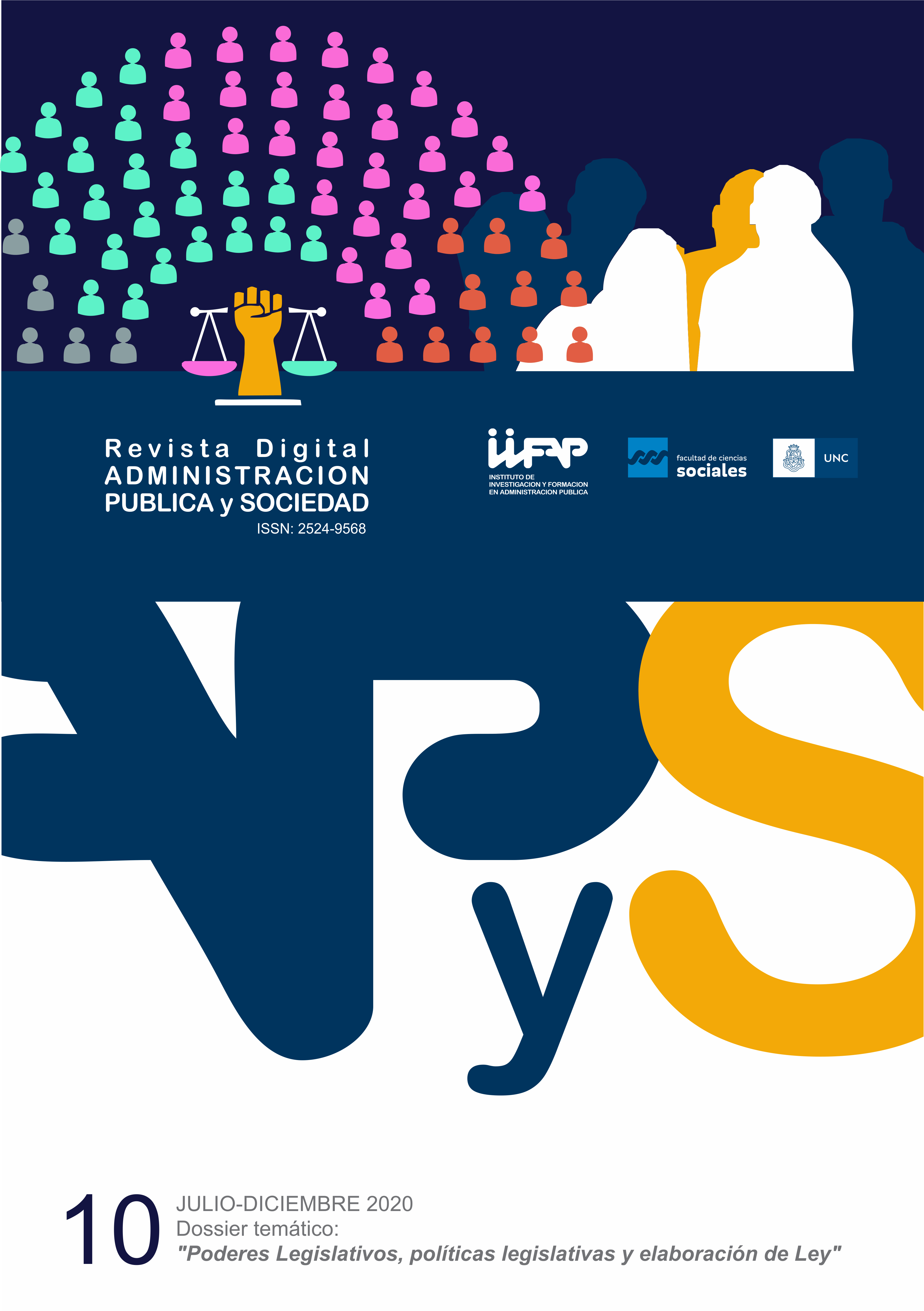An approach to the insufficiencies of open government strategies
Main Article Content
Abstract
After the creation of the Alliance for Open Government, many countries have developed strategies to enhance this form of government, and today the number of civil society organizations joining these processes is growing. However, there are still shortcomings that have to be addressed in order to make it become a generalized practice in the rest of the Latin American countries. The development of strategies adjusted to each context becomes more complex due to the large number of factors that it encompasses and its possible results in the short, medium and long term. The objective of this work is based on the empirical analysis of some strategies developed by some Latin American countries for the implementation of Open Government; of which three shortcomings are identified and a qualitative and quantitative analysis of their main variables is presented, which will allow establishing priorities for the development of future government strategies. In the conclusions it is highlighted that the dependent variables public servants, technologies and citizen participation have a strong relationship with the independent variables training, information and communication technologies, and motivation, respectively; elements that define possible paths in the elaboration of governmental strategies to promote the success of Open Government.
Article Details

This work is licensed under a Creative Commons Attribution-NonCommercial-ShareAlike 4.0 International License.
Authors who publish in this journal accept the following terms of the copyright policy:
- Authors shall retain their copyright (including copyrights) and shall grant to the journal the right of first publication of their work, which shall simultaneously be subject to the Creative Commons Recognition License: No commercial use of the original work or any derivative works is permitted, distribution of which must be made under a license equal to that which governs the original work.
- Authors may adopt other non-exclusive license agreements for the distribution of the version of the published work (e.g., placing it in an institutional repository or publishing it in a book) provided that the initial publication in this journal is indicated.
- Authors are allowed and encouraged to disseminate their work through the Internet (e.g., in institutional repositories or on their website) after the publication process, which may lead to interesting exchanges and increased citations of the published work. (See The Effect of Open Access).
How to Cite
References
Aquilino, N. y Arena, E. (2018). Contribuciones para una estrategia de monitoreo y evaluación del III Plan de Acción Nacional en Gobierno Abierto. Recuperado de: http://www.academia.edu/download/58142095/DT-173-MYE-Contribuciones-para-una-estrategia- de-MyE-del-III-Plan-de-Accion-Aquilino-y-Arena.pdf
Arroyo, J. (2017). La Innovación Abierta como Pilar Del Gobierno Abierto (Open Innovation as a Pillar of Open Government). Revista Enfoques, 15(27), 13-41.
Chitiva, D. R. (2019). Gobierno abierto en Chile-Fuente de innovación y evolución. Recuperado de: https://repository.ucc.edu.co/handle/20.500.12494/14307
CLAD (2016). Carta Iberoamericana de Gobierno Abierto. Aprobada por la XVII Conferencia Iberoamericana de Ministras y Ministros de Administración Pública y Reforma del Estado, 7 y 8 de julio. Bogotá, Colombia: CLAD, 21p.
Concha, G. y Naser, A. (2012). El desafío hacia el gobierno abierto en la hora de la igualdad. Comisión Económica para América Latina y el Caribe (CEPAL), 18.
Darín, S. y Maenza, R. R. (2018). Desafíos de la planificación estratégica para el gobierno abierto. En V Simposio Argentino sobre Tecnología y Sociedad (STS 2018)-JAIIO 47
García, J. G. (2014). Gobierno abierto: transparencia, participación y colaboración en las Administraciones Públicas. Innovar: Revista De Ciencias Administrativas y Sociales, 75-88.
González, J. J. S. (2015). La participación ciudadana como instrumento del gobierno abierto. Espacios públicos, 18(43), 51-73.
Güemes, C. y Brugué, Q. (2017). Confianza y gobierno abierto en América Latina. Desde el gobierno abierto al Estado abierto en América Latina y el Caribe. Santiago: CEPAL, 2017. LC/PUB. 2017/9-P. p. 253-282.
Naser, A. y Ramírez, Á. (2014). Plan de gobierno abierto. Manuales. Publicación de las Naciones Unidas. Cepal.
Naser, A. y Ramírez, Á. (2017). Plan de gobierno abierto: una hoja de ruta para los gobiernos de la región.
Oszlak, O. y Kaufman, E. (2014). Teoría y práctica del gobierno abierto: Lecciones de la experiencia internacional. Recuperado de: http://repositorio.cedes.org/handle/123456789/4285
Prieto, P. y Ramírez, Á. (2014). Caracterizando la participación ciudadana en el marco del Gobierno Abierto. Revista del CLAD Reforma y Democracia, (58), 61-100.
Quintanilla, G. y Gil, J. R. (2016). Gobierno abierto y datos vinculados: conceptos, experiencias y lecciones con base en el caso mexicano. Revista del CLAD Reforma y Democracia, (65), 69-102.
Ramírez, Á. V. (2011). Gobierno Abierto y Modernización de la Gestión Pública. Tendencias actuales y el (Inevitable) Camino que Viene. Reflexiones Seminales. Revista Enfoques: Ciencia Política y Administración Pública, 9(15), 99-125.
Sandoval, R. (2015). Gobierno abierto y transparencia: construyendo un marco conceptual. Convergencia, 22(68), 203-227.
Sebastián, M. C. y Cardama, S. M. (2016). Gobierno y Parlamento abierto: la participación ciudadana en el tratamiento y visualización de la información pública. Revista interamericana de bibliotecología, 39(1), 47-56.
Vargas, A. y Joys, J. (2016). Estudio comparativo del nivel de implementación de la e-participación ciudadana en el marco de Alianza para el gobierno abierto, en los países de Uruguay, Colombia, Chile y Perú en el periodo 2012-2014. Recuperado de: http://repositorio.cedes.org/handle/123456789/4285

